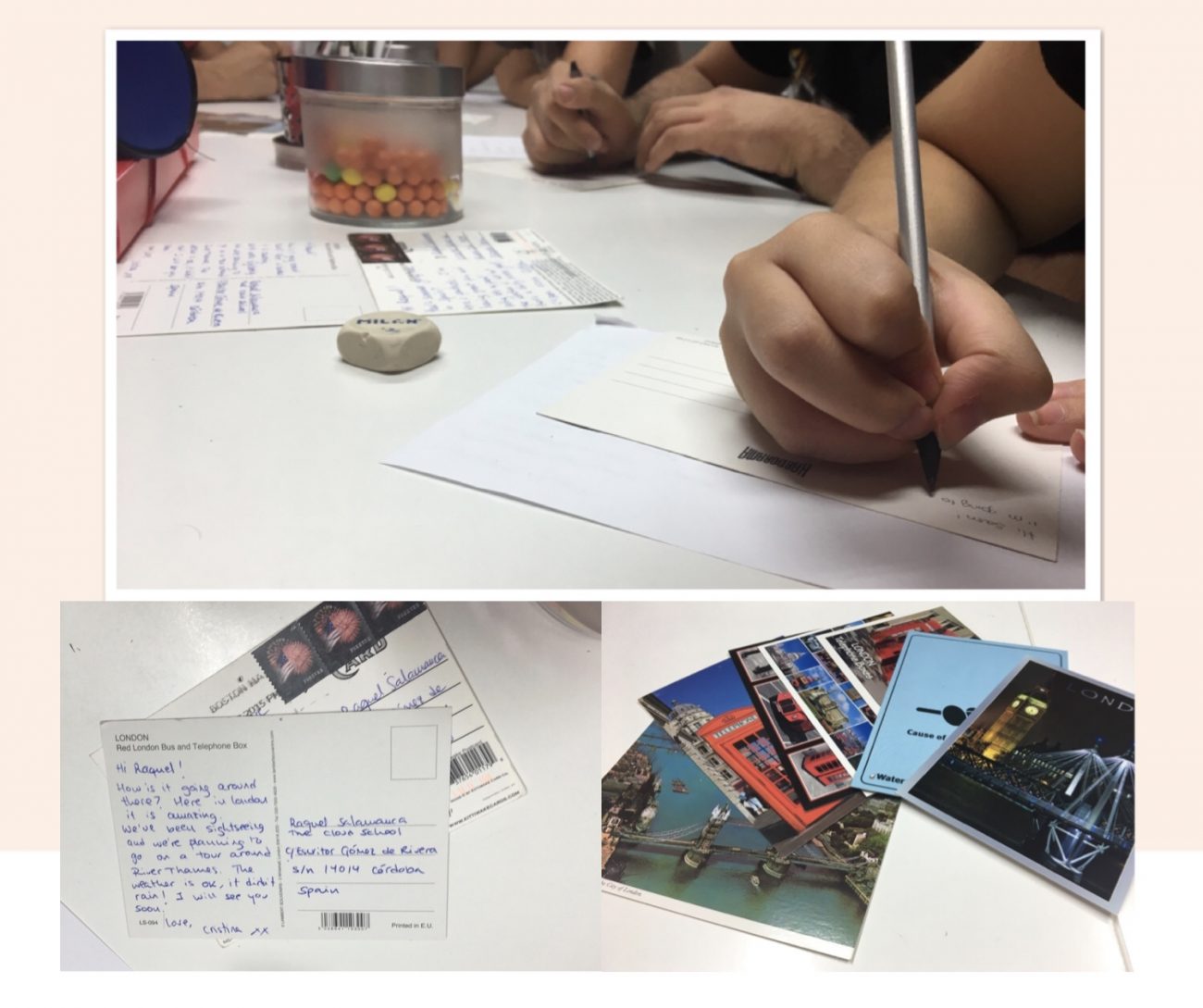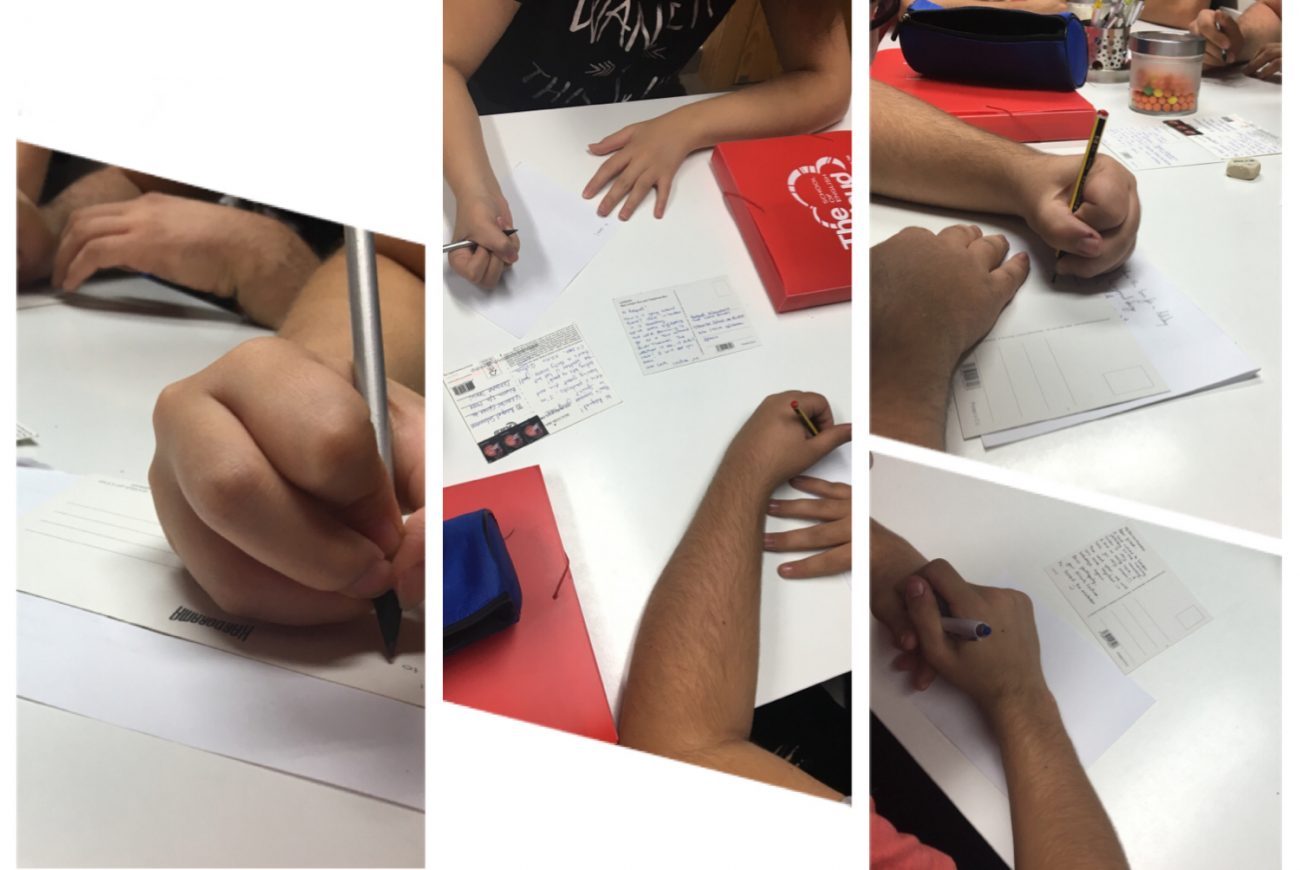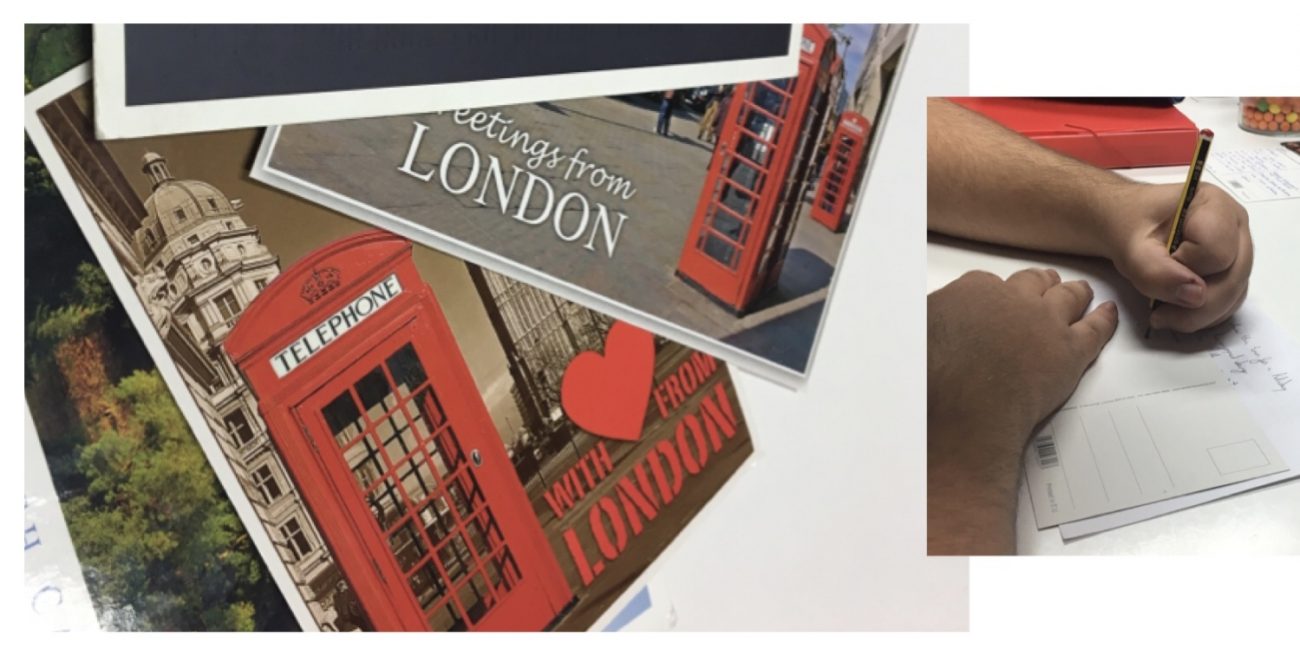DESDE LONDRES CON AMOR: practicando writing parte 2 de PET
Esta semana practicamos el writing parte 2 de PET con uno de nuestros grupos de B1 de adolescentes. Decidimos romper con la rutina diaria de usar el libro de texto y hacerlo algo más interesante y motivador. Siempre intentamos hacer que los estudiantes aprendan en un contexto más realista, por ello intentamos involucrarlos en un entorno de habla inglesa real. Por lo tanto, esta vez probamos usando ‘realia’, es decir, elementos reales que harían que nuestra lección se asemeje más a un intercambio de conversación real.
Para aquellos que no están familiarizados con el término, ‘realia’ significa usar objetos reales en la clase para que la lección cobre vida y probablemente se haga más fácil de recordar para nuestro alumnado. Como he mencionado anteriormente, cada ruptura con la rutina implica más receptividad y motivación por parte de nuestros estudiantes. En este caso, puesto que estamos trabajando material de examen, estamos asegurándonos de que nuestros alumnos recibirán la práctica de una manera muy positiva y estarán verdaderamente más atraídos e involucrados en la tarea.
¿Cómo lo hicimos?

Esta vez tuve una idea: ¿por qué no mandar alguna postal a la dirección de nuestra academia? De este modo nuestros alumnos podrían verla, leerla y vivirla como si fuera de un verdadero ‘penpal’ (amigo por correspondencia). Así que compramos un montón de postales baratas en una de los millones de tiendas de souvenirs durante nuestro último viaje a Londres e hicimos el plan: Escribiría una postal siguiendo todos los puntos requeridos en el ejercicio del examen. Por ejemplo:
You are on holiday with your family in a different country. You decide to write a postcard to your friend.
Write a postcard to your friend. In your postcard you should
- say when you arrived
- what your plans are
- what you are enjoying the most
Write between 35-45 words on your answer sheet.
Escribí dos postales y las envié por correo ordinario (esto es opcional si estás haciendo la actividad en tu país de origen), entonces, una vez llegase a la academia, los estudiantes tendrían que leerlas, corregir los posibles errores y evaluarla de acuerdo con los requisitos impuestos por el ejercicio, haciéndose las siguientes preguntas:
- ¿Contesta a todas las preguntas requeridas? (3 puntos del examen)
- ¿Es correcta en relación a los parámetros de longitud y estructura / saludo y despedida? (1 punto)
- ¿Es gramaticalmente correcta e incluye el vocabulario apropiado? (1 punto)
Ponlo en práctica
A la hora de la práctica este ejercicio es muy fácil de desarrollar. Habiendo visto las postales que envié, los alumnos estaban automáticamente motivados a escribir una por sí mismos y la práctica fluyó muy fácilmente.

Esta programación de aula puede contextualizarse también dentro de la unidad ‘travelling’ (viajar) o sólo incluirla tras un ejercicio de calentamiento que trate sobre experiencias de viaje (práctica oral). Se podría hacer una lluvia de ideas acerca del tema ‘viajar’ que incluya mapas mentales con vocabulario útil para la tarea o posibles evento o problemas que alguien puede encontrar cuando viaja al extranjero.
Algunos consejos sobre el writing parte 2 de PET:
- Asegúrate de que estás siguiendo la estructura necesaria tal y como se requiere en el ejercicio. Sé formal si estás escribiendo a alguien que no conoces o que es mayor que tú, como “tu profesor” o “tu entrenador” (no uses Hi!/Hey!/What’s up!, (Holi!/Oye!/¿Qué pasa?) ya que no es apropiado). Si dudas, un simple ‘Hello’ (Hola) o ‘Dear X’ (Querido/a X’) es correcto en cualquier contexto.
- Siempre sigue los puntos requeridos en el examen, esto ya te está dando una idea. Subrayar el ejercicio primero te ayudará a asegurarte de que eres consciente de estos requisitos . Recuerda: tienes tres puntos/preguntas/ideas que incluir – ésto ya te está diciendo que si no cumples estos requisitos no conseguirás estos puntos en el examen.
- La extensión es crucial en este ejercicio. Sé concisa/o. Tienes un máximo de 35-45 palabras que cubrir, así que no te vayas por los cerros de Úbeda porque puede que no te quede espacio para uno de los puntos a contestar/incluir necesarios. Si escribes más, el examinador no lo leerá y puede que ello incluya tu despedida, la cual es necesaria para la estructura: ¡ya estarías perdiendo 2 partes! (estructura y extensión).
Cristina Santos
FROM LONDON WITH LOVE: practising PET writing part 2
This week we practised PET writing part 2 with one of our B1 groups of teens. We decided to break with the daily routine of using the textbook and make it more interesting and motivating. We always try to make students learn in a more realistic environment, that is why we try hard to get them involved in a pure English-speaking environment. Therefore, this time we tried using ‘realia’, what would make our lesson assimilate to real conversational exchange.
For those who are not familiarised with the term, ‘realia’ means using real objects in the classroom to bring the lesson to life and very probably make it more memorable for the students. As I mentioned before, every break with the routine implies more receptivity and motivation on the side of our students. In this case, as we are dealing with exam content, we are making sure that our students will receive the practice very positively and will certainly be more attracted and involved in the task.
How did we do it?

This time I had an idea: why not sending some postcard to our academy address? That way, our students could see it, read it and experience it as if it was from a real penpal. So, we bought a lot of cheap postcards in one of the million souvenir shops in our last trip to London and we made the plan: I would write a postcard following all the necessary points required by the exam exercise. For example:
You are on holiday with your family in a different country. You decide to write a postcard to your friend.
Write a postcard to your friend. In your postcard you should:
- say when you arrived
- what your plans are
- what you are enjoying the most
Write between 35-45 words on your answer sheet.
I wrote two postcards and sent them via mail (this is optional if you are doing this activity in your home country), then, once it arrived in the academy, the students would have to read them, correct the possible mistakes questions and assess them according to the exercise requirements, asking themselves the following questions:
Does it answer the required questions? (3 points/marks in the exam)
- Is it correct in relation to length parameters and structure (greetings/farewell)? (1 mark)
- Is it grammatically correct and includes the appropriate vocabulary? (1 mark)
Put it into practice
When it comes to practice, this exercise is very easily to develop. Having seen the postcards that I sent before, the students were automatically motivated to write some themselves and the practise flew very easily.

This lesson plan could also be contextualised in the unit ‘travelling’ or just included after a warm up exercise on travelling experiences (speaking practice). A brainstorming on the subject of travelling could be done including mind maps with useful vocabulary for the task or possible events or problems one may face when travelling abroad.
Some tips on your PET part 2 writing:
- Make sure you’re following the necessary structure as required in the exercise. Be more formal if you are writing to somebody you don’t know or is older than you, such as ‘a teacher’ or ‘your coach’ (do not use Hi!/Hey!/What’s up?, as it is not appropriate). If you hesitate, a simple ‘Hello’ or ‘Dear X’ is correct in any context.
- Always follow the necessary points required in the exam, this already gives you an idea. Underlining the task first will help you ensure that you are aware of these requirements. Remember: you have three points/questions/ideas to include –this is already telling you that if you don’t achieve these requirements, you will not get these marks in the test.
- Extension is crucial in this exercise. Be concise. You have a maximum of 35-45 words to cover, so don’t go off topic because you may not have space for one of the necessary points to answer/include. If you write longer, the examiner will not read it, and this may include your farewell, which is necessary for the structure: you would be missing 2 parts! (structure and extension).
Cristina Santos





